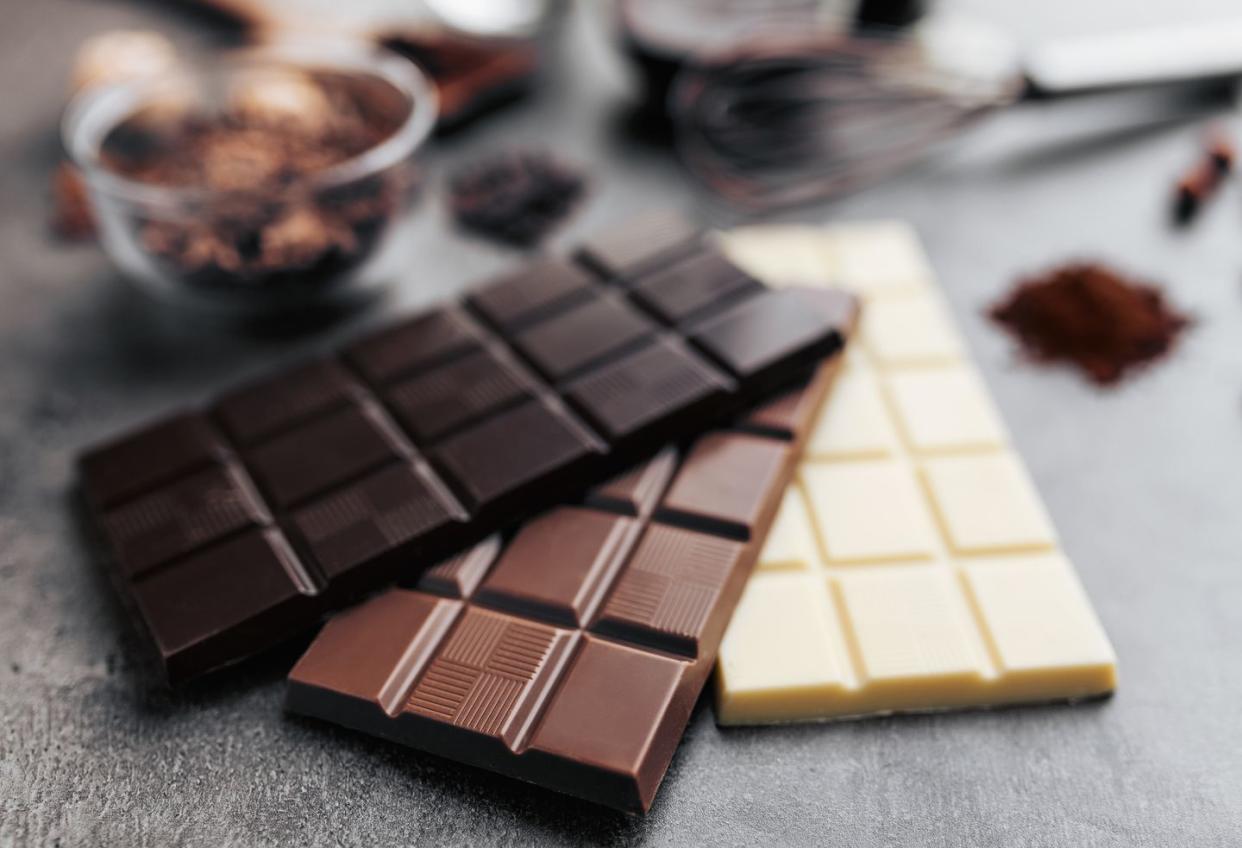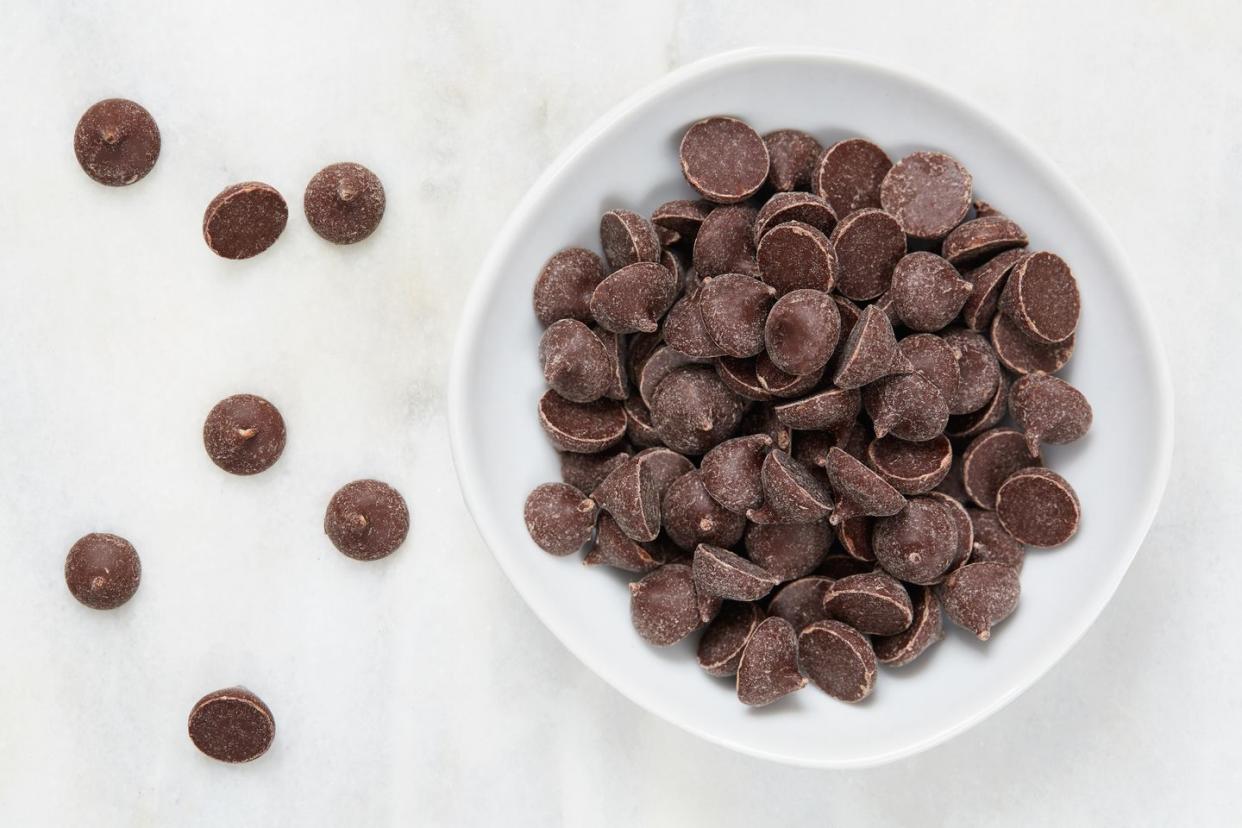Hold On, Does Chocolate Go Bad? Here's the Sweet Truth
Calling all chocolate lovers—this one's for you! If you've cleaned out your pantry and found a stash of old Halloween candy or half-used bag of chocolate chips, you know how thrilling and confounding it can be. While you're tempted to snack or bake immediately, you're probably also thinking, "How old is this anyway—does chocolate go bad?"
There's no hard and fast rule for knowing if your chocolate is fresh. In fact, the shelf life of chocolate depends on a few factors, namely the type and quality of the chocolate, and how it's stored. The good news is that as long as it looks, smells, and tastes normal, it's generally safe to eat. However, there are still a few things to consider before eating or baking your favorite chocolate dessert recipes.
Ahead, we're sharing how to tell if your chocolate has gone bad regardless of whether you have dark chocolate versus milk chocolate or even white chocolate, as well as providing some tips for storing chocolate to preserve its freshness.

How long does it take for chocolate to go bad?
So how do you know if it's expired? First things first: Look at the expiration date on the packaging. Chocolates will taste better if eaten before their best-by dates, but that doesn't mean you can't still nibble on it in the weeks to come. The shelf life of chocolate depends on the type of chocolate. Chocolate with higher milk content (like white chocolate or milk chocolate) will go bad quicker than chocolates with lower milk content (like semi-sweet, bittersweet, and dark chocolate). It's generally okay to eat chocolate for months past the expiration date if it’s been unopened or stored correctly.
Here's a quick guide to chocolate types and their shelf lives:
Dark chocolate, baking chocolate, bittersweet, or semi-sweet: The higher the cocoa percentage, the longer the shelf life. These chocolates will generally stay fresh for one to two years.
Milk chocolate: So many holiday candies are made of milk chocolate. If you come across a piece that's unopened, it can stay fresh for up to one year. But if there are nuts or other ingredients involved like a Snickers bar or Reese's peanut butter cups, the candy is more prone to going bad at a quicker rate.
White chocolate: The outlier of the group—some might even say it's not real chocolate, but it is. Since white chocolate is made up of dairy and cocoa butter, it's likely to go bad earlier. It can last up to six months unopened.

What's that white stuff on my chocolate?
Have you ever come across an old bar of chocolate and noticed a chalky white color on the surface? Or something that looks like gray dust? Don’t worry! It’s not unusual for this to happen and there’s even a name for it—it’s called chocolate bloom. The good news is that this doesn’t mean the chocolate has gone bad.
There are two types of bloom: fat bloom and sugar bloom. Fat bloom happens when the chocolate is exposed to inconsistent temperature changes, causing that white film on the surface. Sugar bloom happens when the chocolate is exposed to moisture, causing gritty-looking sugar crystals to form. Bloomed chocolate is still perfectly safe to eat, but it won't have the same delicious taste or texture as fresh chocolate. Instead, try baking with it—you won't notice any difference in your cookies!
How can you tell if chocolate has gone bad?
If your chocolate smells bad or has any kind of mold, it's time to throw it in the trash. And if there are any cracks on the surface, chances are that the chocolate is stale and past its prime. Use your best judgment: If it looks and smells like chocolate, it'll likely taste like chocolate. Any questionable smells or mold is better off being tossed.
How do you store chocolate?
Chocolates are best stored in a cool, dry place like your pantry. Too warm or too cold and your chocolates are bound to either melt, collect condensation, or start to mold. It's tempting to keep chocolate in the refrigerator, but unless you live somewhere really hot, it's best not to. The fridge is a breeding ground for odors, and it can cause chocolates to bloom. If possible, keep your chocolate in its original packaging, especially if it's packaged in aluminum or opaque paper—these materials help keep out light and moisture. If the chocolate is unwrapped, store it in a sealed freezer bag or air-tight container.
You Might Also Like






